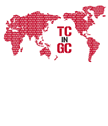 |
 |

TCinGC’s Five Key Values | Frequently Asked Questions | Would You Like to Become a TCinGC Partner?
|
TCinGC is built around five key values: partnership, appropriate expertise, capacity building, expanding vision, and sustainability. 1. Partnership The working relationship between the student consultant and the
development partner is designed to be mutually-beneficial. The development
partner needs to be a decision maker in a non-profit, NGO, school,
or government agency. This leader need not be ICT-savvy; in fact,
some have little or no computer literacy. Partnering with a student
consultant provides the personal support to progress in developing
an understanding of ICTs and integrating technology with the mission,
operations, and programs of the organization. The student consultant benefits by having the opportunity to work abroad with governmental and non-governmental leaders, by understanding the challenges of local development, and by experiencing how ICTs can be used to meet those challenges. Perhaps most importantly, students benefit from knowing that their talents can be used not only for their own economic gain, but for building our global community. 2. Appropriate Expertise Each individual brings a particular expertise to the partnership. While the computer science student is not necessarily an expert in operating an employment education center, a local AIDS clinic, or managing a government ministry, he or she is a budding expert in the development, use, and management of ICT. The development partner is an expert in the needs of the organization’s constituents and clients, management and operations, and implementing the organization’s mission. Significant capacity in the development partners’ organization is built through the union of both of these expertises. 3. Capacity Building TCinGC does not take a project-development approach. Rather, the first goal of the consulting partnership is to build the capacity of the development partner and their organization to use, manage, and plan for technology in support of its mission. Technology does not come first; rather, it is the organization’s mission and the problems that take precedence. Technology is an approach to problems. Building technical capacity involves better tools, but more important, better insights for their application. As a result, the technical aspect of any solution may be simple, but it is designed to address significant needs in the community in a way that is sustainable. This invariably leads to excitement on the part of the community development partner and a motivation to continue to augment successes. 4. Expanding Vision Once the development partner has embarked on a new path of learning and using technology, an expanded vision for how ICTs can enhance the organization’s mission grows naturally. The student consultant’s final task is to help define the new vision that will support the organization long after the partnership has concluded. 5. Sustainability Finally, all ICT solutions must be implemented in a way that is sustainable using the organization’s available resources. A common example involves the development of tools for an organization to manage information. A non-sustainable solution would be to design and implement a sophisticated database. In this case, as the underlying software changes and the needs of the organization change, the database cannot be evolved with the resources at hand. A sustainable solution would be the development of a simpler, more focused system only as sophisticated as the development partner has resources to evolve. |